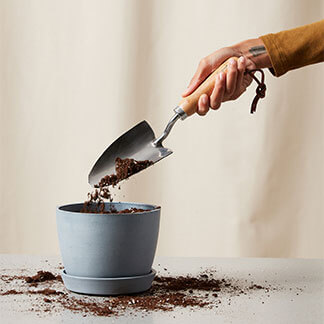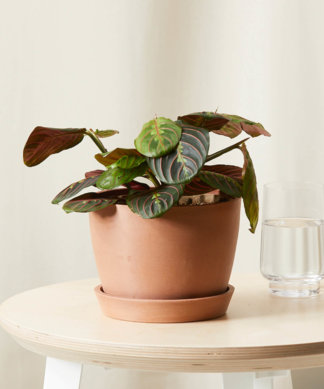Green Living
An Occupational Therapist Explains The Benefits Of Gardening With Kids

Now that summer has arrived, chances are you’re looking for activities to keep your kids entertained. We’d like to suggest something educational, fun, and near to our hearts. Why not consider gardening with your kids? Gardening can add beauty and the opportunity to harvest vegetables and flowers. When it comes to kids, including them in plant care comes with so many benefits!
We talked with pediatric occupational therapist and founder of Nurture OT, Candace Peterson. “I cannot stress enough how much a young child can gain from gardening projects and plant care,” she tells us. “Sensory, motor, cognitive, social, emotional development, and daily living skills are all fostered through this type of activity.”
With that in mind, we invite you to pick up a child-friendly plant. There are lots of ways to teach your little ones the basics of plant care this summer. Below, find everything you need to know about gardening projects for kids aged three and up, according to an occupational therapist.
What Your Kids Can Learn From Gardening

Sensory development
“Sensory development is so important for little ones and engaging with nature is one of the best possible ways to encourage this,” explains Peterson. “Exploration of the dirt, leaves, flowers, stems, and roots provides an incredible amount of tactile input for a child’s body.” If you’re looking to focus on sensory development with your kids, consider a textural plant like the spiky Bromeliad Pineapple or the whimsical Ponytail Palm.
Motor skills
“A child can also gain a variety of motor skills and strengthen their muscles from gardening,” she notes. “Using two hands as a team (known as bilateral-coordination), scooping dirt for hand strength and improved grasp, squatting down and standing back up, lifting and carrying plants, dirt, or tools, and watering a plant all contribute to this development.” Repotting a plant can be a great activity to develop motor skills—read all about it in our how-to guide.
Social, emotional, and cognitive skills
“These skills are all promoted by interacting with others while gardening or caring for a plant, which can include working as a team, following directions, sequencing steps, and asking for or providing help,” she explains. “How cool is it when our children want to share their learning experiences with us? Hearing, ‘Look how tall my plant is growing!’ is priceless.” For a fast-growing plant sure to bring satisfaction, try the vining Hoya Macrophylla.
How To Teach Your Kids About Gardening

Of course, there are countless garden ideas for kids you can use to teach them about plant care. You can help them plant a small flower for their windowsill to look after or help them plant a variety of seeds in an empty egg carton. Look for lots of child-friendly plant activities in this article.
Regardless of your chosen garden activity, Peterson recommends creating step-by-step stations. These can guide your child through different aspects of gardening. “Create side-by-side stations and model each gardening task for them until they catch on,” she instructs.
“You can also create a visual schedule that has picture examples of each step that they can reference through the activity. Children ages three to four can typically follow two-to-three step directions.” Of course, pick up child-friendly gardening tools before engaging in this activity.
No matter what your approach, “always respect a child’s comfort level when engaging with the plants,” she adds. “Sometimes sensory experiences are new and overwhelming, but over time, they usually become more comfortable!”













